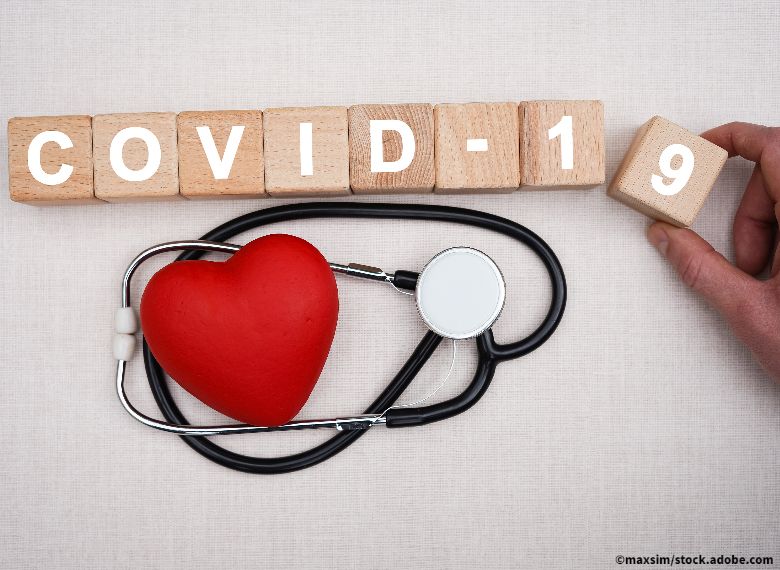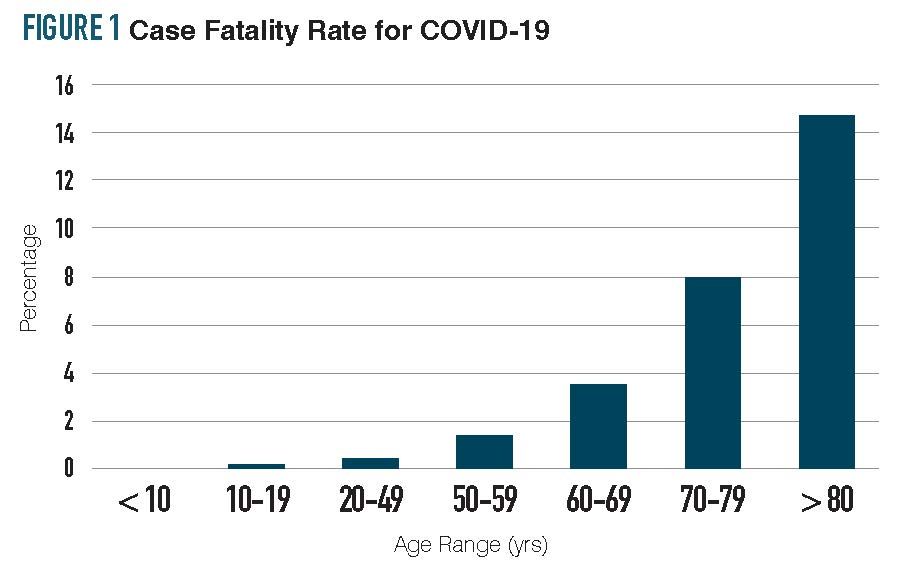COVID-19: The pathogen that will define the decade
COVID-19 presents a significant threat to our communities, our patients, and our families. As the pandemic continues, more will be learned about how this virus behaves and what we can do to keep ourselves and our patients safe.

Figure 1

Sars-CoV-2, known more commonly as COVID-19, is a global pandemic, with over 200,000 confirmed cases, nearly 9,000 deaths, and likely numerous more undiagnosed infections at this writing. Treatment options are limited, no vaccine has yet been developed, and no herd immunity exists. The best protection against spread of the virus that we have currently is social distancing and careful handwashing. These practices, along with the virulence and infectivity of this virus, are changing how we act, live, and practice medicine.
COVID-19 is part of a group of common viruses, coronaviruses, which are well known to cause upper respiratory illness. But COVID-19 is novel in that it appears to cause more severe infection than other coronaviruses. After exposure, the incubation period is 2 to 14 days.1 About 2% of people who are exposed will develop disease. Symptoms of infection include fever, cough, shortness of breath, and gastrointestinal symptoms. Of those infected, approximately 20% become critically ill. Individuals who are older, and/or have chronic medical conditions are at increased risk of this. Mortality is thought to be anywhere from 1% to 4% depending on the country and community, and dramatically increases with age (Figure 1).2
COVID-19 and pregnancy
At the time of this writing, little is known about how COVID-19 impacts pregnancy. Based on available data, it does not appear to be more severe in pregnant women. A World Health Organizationreport from China, which included 150 women, found 8% had severe infection (respiratory rate above 30 or oxygen saturation less than 93%) and only 1% required mechanical ventilation.3 However, other coronaviruses, such as SARS and MERS, as well as other respiratory viruses, such as influenza, are associated with more severe disease, as well as increased maternal morbidity and mortality.4,5 This virus, as well as other respiratory viruses, have not been associated with miscarriage or congenital anomalies. Although data are mixed, any fever in the first trimester may be associated with congenital malformations.6
Preterm delivery (36 weeks) was reported from some of the early cases from China, although it may have been iatrogenic and not related to spontaneous preterm birth. In these studies, no virus was found in amniotic fluid, cord blood, or breast milk.7 However, the studies are small and more data are needed. There is currently no evidence of vertical transmission. However, there are reports of positive tests on newborns hours after delivery following negative tests that were obtained at delivery. This suggests possible maternal contamination at the time of testing although there is potential for respiratory transmission soon after birth from close contact with an infected mother.8 Temporary separation of neonate from an infected mother should be considered until the infectivity period ends. This extends to mothers exposed to COVID-19, with the separation extending from immediately after delivery until the mother’s infectivity period ends.9 In this setting, pumping with bottle feeding by a non-infected caregiver is recommended because breast milk is still thought to be the best nutrition source for infants and provides protection against other illnesses. If a mother chooses to breastfeed rather than separate, she should wear a mask while doing so.
At this time, low-risk patients who present with mild infection, including pregnant women, do not need to be hospitalized.10 Infection, even if severe, is not necessarily an indication for delivery. In fact, for the low-risk patient with COVID-19 infection, postponing delivery until infectivity is over should be considered, unless delivery is medically indicated. For women with first- or second-trimester infection who recover, assessment of fetal growth by ultrasound can be considered in the third trimester.
Reducing infection
As far as infection mitigation, it is clear that social distancing is very effective. This includes minimizing group activities, meeting electronically when possible, and avoiding crowds and public places. If meeting in person is necessary, social distancing is the advised approach, and that specifically means staying at least 6 feet away from the nearest person. Practicing good hand hygiene is also critical. Washing your hands for 20 seconds with soap and water or using hand sanitizer is a best practice. As much as possible, frequently cleaning commonly used surfaces – including computers, keyboards, cell phones, light switches, doorknobs, and other surfaces – with disinfectants is another important prevention technique. At this time, travel is also strongly discouraged.
For pregnant patients, many practices are spacing out prenatal care visits for low-risk patients as well as cohorting sick patients in a separate setting. Well-woman exams and routine screening appointments are also being rescheduled in many offices to better adhere to social distancing practices, although acute gynecologic problem-visits should still be done to avoid overcrowding in the emergency room. Telehealth, phone visits, and video visits are other effective ways to provide care for the appropriate patients.
COVID-19 presents a significant threat to our communities, our patients, and our families. As the pandemic continues, more will be learned about how this virus behaves and what we can do to keep ourselves and our patients safe.
Dr. Brenna Hughes is a maternal-fetal medicine specialist at Duke Health in Durham, N.C. Her research expertise is infectious diseases in pregnancy.
Dr. Sarah Dotters-Katz is a maternal-fetal medicine specialist at Duke Health in Durham, N.C. whose research includes clinical infectious diseases and how they impact pregnancy.
References:
- Li Q, Guan X, Wu P, et al. Early Transmission Dynamics in Wuhan, China, of Novel Coronavirus-Infected Pneumonia. N Engl J Med. 2020.
- Oke J, Heneghan, C. Global Covid-19 Case Fatality Rates. 2020; https://www.cebm.net/global-covid-19-case-fatality-rates/. Accessed March 21, 2020, 2020.
- Mission W-CJ. Report of the WHO-China Joint Mission on Coronavirus Disease 2019 (COVID-19) 2020; https://www.who.int/docs/default-source/coronaviruse/who-china-joint-mission-on-covid-19-final-report.pdf. Accessed 03/18/2020, 2020.
- Alfaraj SH, Al-Tawfiq JA, Memish ZA. Middle East Respiratory Syndrome Coronavirus (MERS-CoV) infection during pregnancy: Report of two cases & review of the literature. J Microbiol Immunol Infect. 2019;52(3):501-503.
- Wong SF, Chow KM, Leung TN, et al. Pregnancy and perinatal outcomes of women with severe acute respiratory syndrome. Am J Obstet Gynecol. 2004;191(1):292-297.
Contemporary OB/GYN Senior Editor Angie DeRosa gets insight on the current state of COVID-19 from Christina Han, MD, division director of maternal-fetal medicine at the University of California, Los Angeles, and member of its COVID-19 task force. Han is an active member of the Society for Maternal-Fetal Medicine and discusses the issues on behalf of SMFM.
Listen
Study links COVID-19 infection to higher low birthweight and preterm birth rates
March 24th 2025A new study found that pregnant women infected with COVID-19, especially in the third trimester or with severe symptoms, faced higher risks of preterm birth, low birthweight, and neonatal intensive care unit admission.
Read More
